As Clallam County faced job losses, business closures, and budget cuts, the Jamestown S’Klallam Tribe reported $85.9 million in revenue last year. While the county scrambled for federal aid, the Tribe expanded services, acquired land, and advanced major projects—backed by tax advantages, exclusive grants, and growing political influence. The contrast raises questions about equity, transparency, and who truly holds the power in Clallam’s future.
For Clallam County, 2024 may be remembered as a year of economic losses. One of the largest blows came with the closure of the McKinley Paper Mill, resulting in the elimination of nearly 200 family-wage jobs. The retail sector also faced challenges, with longtime businesses such as Rite Aid, Big Lots, and Joann Fabrics announcing their closures.
Yet in a year marked by hardship for many, there was at least one moment of celebration. Applause broke out in the Clallam County Commissioners' boardroom with the announcement that the region had secured a $35 million federal Recompete Grant awarded to the most economically depressed regions of the nation. Although the County had hoped for $50 million, Commissioner Mike French noted that the funds could be used to help local tribes train and hire grant writers—potentially securing more grants in the future. With luck, Clallam County will be poor enough to secure the top spot next time.
While the County struggled—and even its largest employer, Olympic Medical Center, faced operational and financial strain—one corporation on the North Olympic Peninsula thrived. The Jamestown S’Klallam Tribe released its 2024 Report to Tribal Citizens, offering a stark contrast to the broader regional downturn. The report details a year of significant investment, expanded services, environmental leadership, and sustained economic success.
Demographics and education
Tribal enrollment decreased slightly last year, from 517 to 509 members, with 213 members residing "in area."
Meanwhile, the Tribe strengthened its collaboration with the Sequim School District through initiatives that include:
Training school district staff in local American Indian culture and history
Providing tutors for tribal students during and after school
Offering federal funding to support tutoring services
Including tribal staff in student support meetings
Federal partnerships and co-stewardship agreements
The report highlights the significance of the Title IV Tribal Self-Governance Program, through which the Department of the Interior distributes about $1.5 billion annually to Indian Tribes and Tribal organizations via Self-Governance compacts and Self-Determination contracts.
Under the Biden-Harris Administration, more than 400 co-stewardship agreements were signed with Tribes. Among them is the Jamestown S’Klallam Tribe’s agreement with the U.S. Fish and Wildlife Service to co-manage the Dungeness and Protection Island National Wildlife Refuges. Tribal stewardship practices will promote a more balanced conservation strategy while the Tribe manages its 50-acre commercial oyster farm of non-native species within the wildlife refuge.
Additionally, the Buy Indian Act has played an increasingly important role in the Tribe’s economic development. By giving preferential treatment to Indian-owned businesses for Department of Interior contracting opportunities, the Act has helped create jobs, stimulate revenue growth, and reduce administrative burden in securing contracts—especially in construction. This has allowed the Tribe to reinvest in other areas.
Federal investment and state-level gains
The Biden-Harris Administration delivered the largest direct federal investment in Tribal Nations in U.S. history:
$32 billion from the American Rescue Plan Act since 2021
$13 billion from the bipartisan Infrastructure Law for broadband, roads, bridges, transit, and water
$700 million from the Inflation Reduction Act for climate resilience, drought mitigation, and clean energy initiatives
As part of this wave of investment, the federal government’s “Justice-40 Initiative” ensures that at least 40% of the benefits of relevant investments go to disadvantaged communities, including all federally recognized Tribes. This prioritization supports clean air and water projects, affordable energy, job creation, and long-term economic growth in Tribal communities like Jamestown.
At the state level, the 2024 supplemental capital budget included:
$15 million for the Jamestown 16-bed inpatient behavioral health hospital
$1.3 million in the supplemental transportation budget for design and engineering of the “Olympic Discovery Trail/US 101 Highway Safety Project,” which will provide safe passage across Highway 101 in Blyn
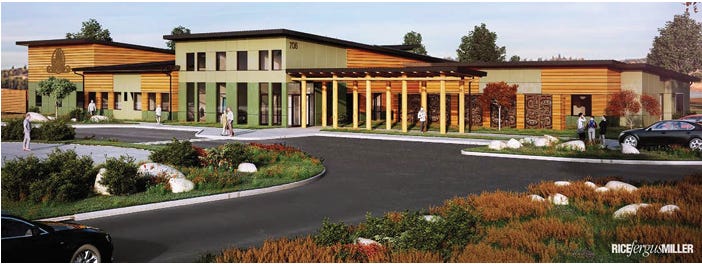
The Tribe also supported 22 bills during the session, with 11 passing. Among the highlights:
A key bill aligned Washington’s carbon market with California and Quebec under the 2021 Climate Commitment Act. Governor Jay Inslee personally met with W. Ron Allen and Loni Greninger to secure Jamestown’s support.
HB 1228 promotes a multilingual Washington by providing grants to expand tribal language education programs in schools.
HB 1929 established the Post-Inpatient Housing Program for Young Adults, supporting 18–24-year-olds after inpatient behavioral health treatment.
HB 2019 launched the Native American Apprentice Assistance Program, providing tuition and expense support for Tribal members entering state-registered apprenticeships.
Environment, infrastructure, and land stewardship
In FY2024, the Tribe used the Tribal Environmental Policy Act (TEPA) for a project at the Cedars at Dungeness Golf Course. The project aims to expand the driving range by filling a portion of an existing wetland.
The Tribal Historic Preservation Office (THPO) continued consulting with Olympic National Park on water system upgrades at Hurricane Ridge, as it has been identified as an important cultural site. A Memorandum of Agreement has been drafted to mitigate cultural site impacts. THPO will conduct regular site visits during ground-disturbing work if the Lodge is reconstructed.

The Tribe is also working with its Administration Department to design a new Natural Resources building. It will incorporate solar power, battery storage, and EV charging stations—backed by a $4 million Bureau of Indian Affairs grant.
Jamestown continued reacquiring ancestral lands across Clallam and Jefferson Counties. The Tribe’s land base now totals nearly 1,800 acres, categorized as:
841.7 acres in Trust
269.3 acres designated as Reservation
681.54 acres as Fee land
Properties are located in Blyn, Miller Peninsula, Jamestown Beach, Sequim, Carlsborg, Port Angeles, along the Dungeness River, and beyond.
Business development and revenue
The 7 Cedars Resort continues to be a cornerstone of Tribal revenue and services. In 2024, general fund contributions from 7 Cedars increased to $5.5 million.
Other revenue highlights:
Tax revenues from cigarette, fuel, sales, and hotel taxes totaled $2.9 million through September, with projections of $3.8 million for the full year
The 7 Cedars Hotel celebrated its five-year anniversary with a 74% occupancy rate—9% higher than its competitors
Jamestown Seafood saw significant growth, including:
Launch of a dive team to plant and harvest geoduck in Sequim Bay
Expansion of live sablefish sales to Asian markets in the Seattle-Bellevue-Tacoma area
Jamestown Networks expanded its partnerships with state agencies and explored new cell tower locations in Carlsborg.
Carlsborg Self-Storage maintained high occupancy and staffing levels and is nearing trust status.
Jamestown Property Management (JPM) reported ongoing success. Its Airbnb rental program is performing well, and two more units are planned by the end of 2025. The Sequim Trading Plaza (Hurricane Coffee block) is fully occupied.
The Economic Development Authority (EDA) is working with Rice Fergus Miller Architects and the City of Sequim on a housing plan centered around the Healing Clinic, with hopes of advancing the initiative in 2025.
There’s also potential for future business expansion at Salish Trails, the former KOA campground.
At Jamestown Excavation, Tribal hiring is a priority. Every Tribal applicant is guaranteed an interview, and managers actively seek ways to integrate citizens into operations.
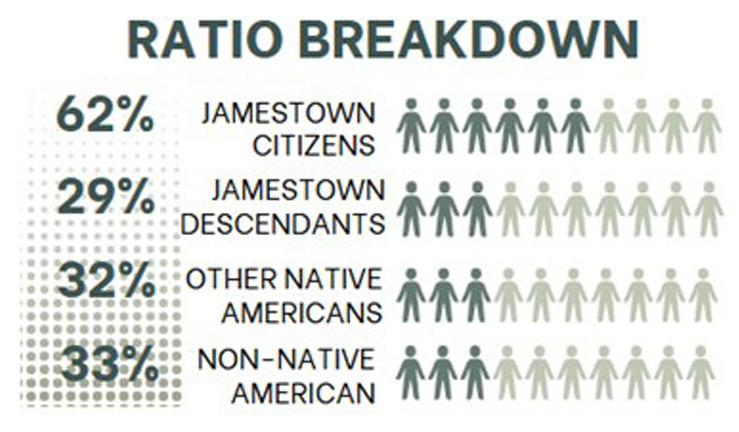
JKT Development’s new partnership with Habitat for Humanity is producing promising results. The Habitat Subdivision is now under contract with E&T Site Development, marking a key milestone in the Tribe’s housing efforts.
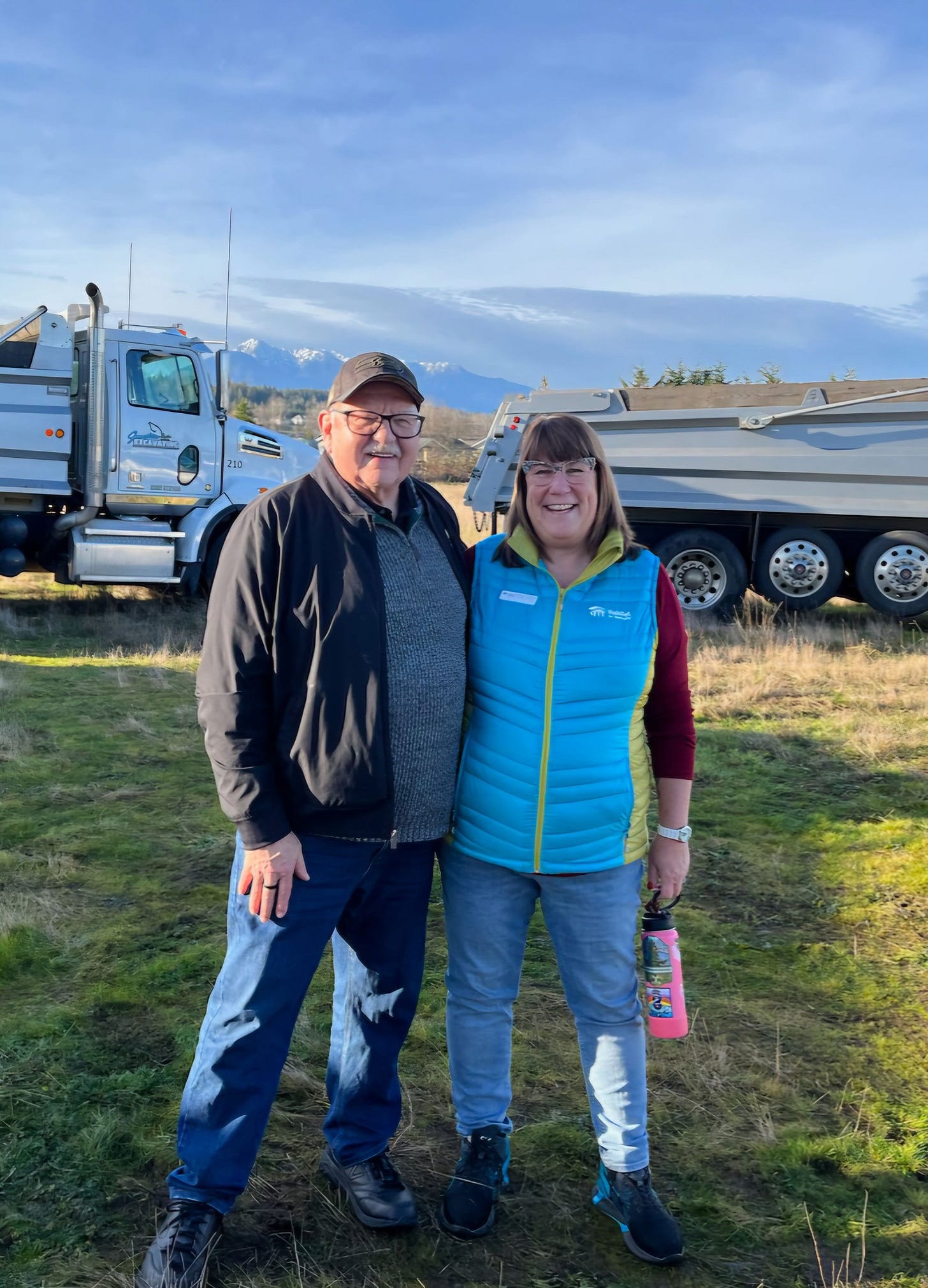
Healthcare and healing initiatives
The Jamestown Healing Clinic (JHC) completed its second year of operations, delivering vital services to over 290 active patients—primarily those battling Opioid Use Disorder (OUD).
Key second-year statistics:
86% of patients reside in Clallam County
Jail dosing is available in Clallam, Jefferson, Forks, and Neah Bay
In 2024, the Clinic received $1.6 million from the Washington State Health Care Authority to develop a mobile medication unit.
Financial overview
In 2024, the Tribe reported total revenue of $85,877,685.
Expenditures were also listed.
To put the $85.9 million revenue into perspective, Clallam County’s entire operating budget this year is approximately $54 million. The Jamestown Tribe consists of 213 local citizens, while Clallam County has about 77,000.
Looking ahead, the Jamestown Financial Department is working with the Internal Revenue Service to finalize long-awaited regulations—more than 25 years in the making—regarding income tax exemptions for tribal businesses.
In stark contrast to Clallam County’s economic downturn and reliance on federal relief, the Jamestown S’Klallam Tribe demonstrates how sovereign governance, strategic investment, and community-centered growth can shape a resilient and prosperous future.
Last Sunday, readers were asked if they trusted Clallam County to independently manage complex partnerships with sovereign tribes and foreign NGOs. Of 187 votes:
3% said, “Yes.”
96% said, “No.”
1% said, “It depends on the project.”




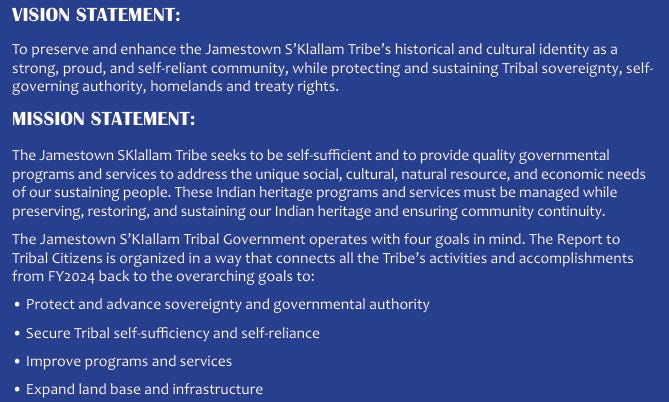



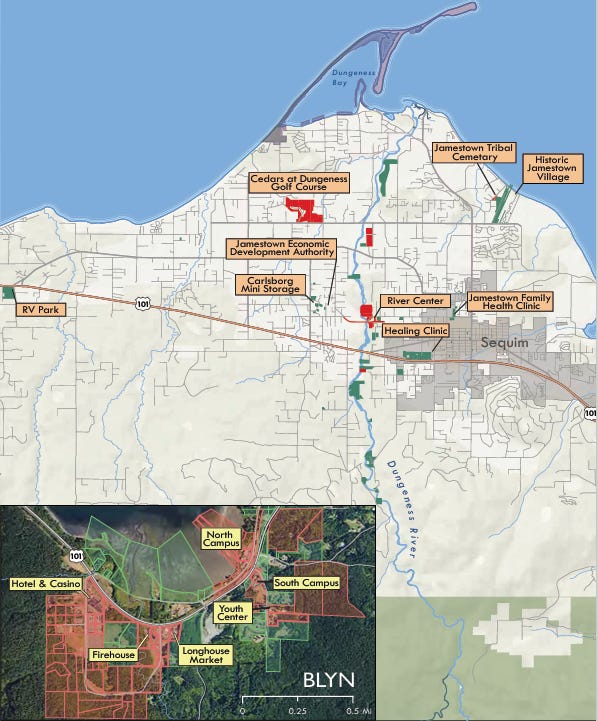
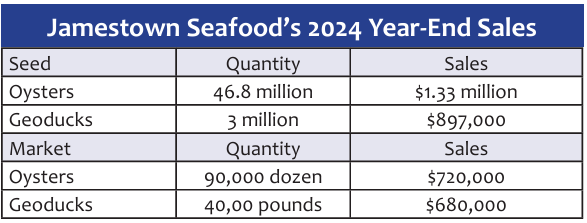
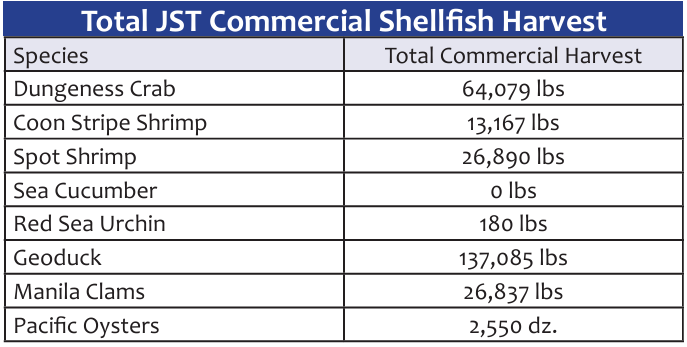
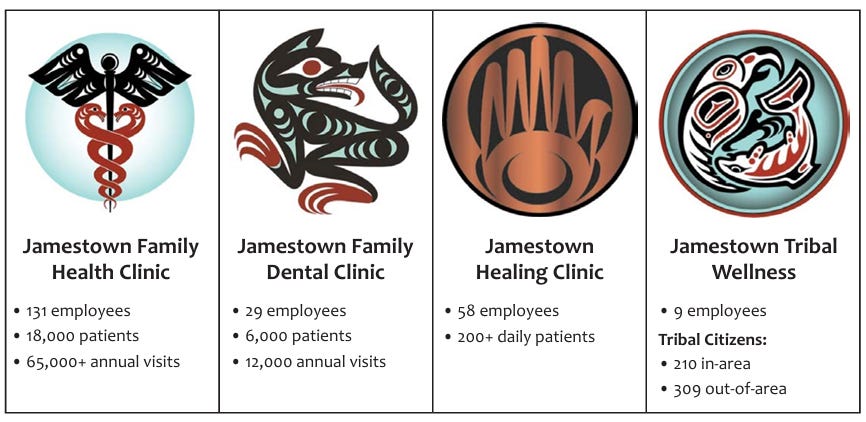
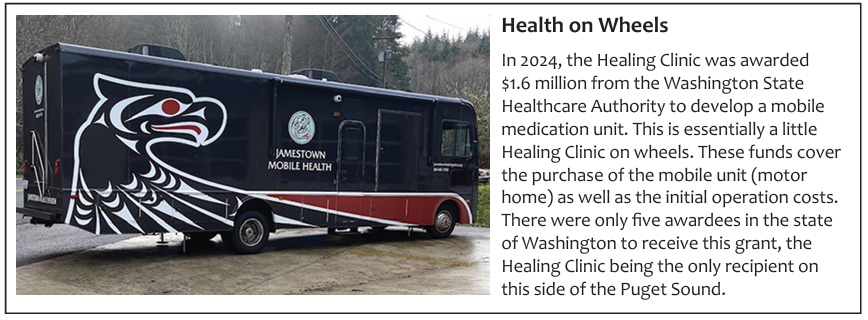
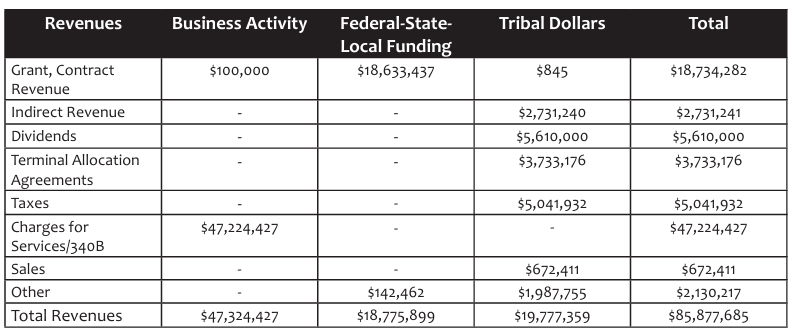

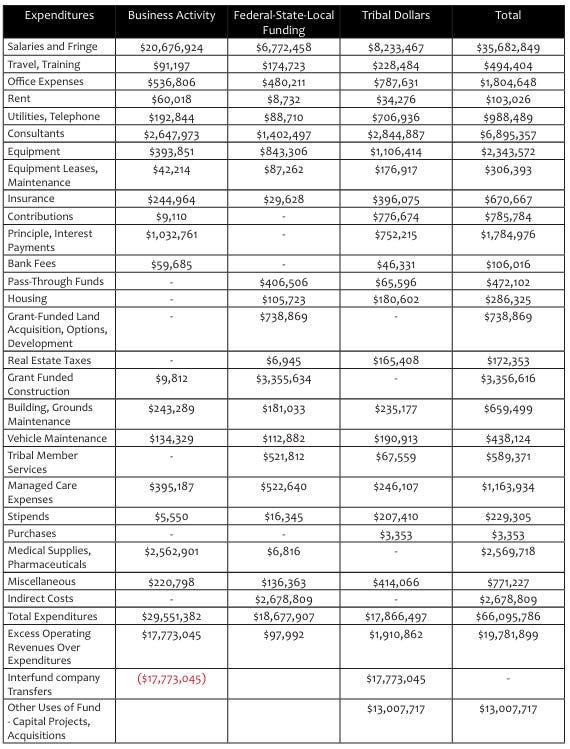
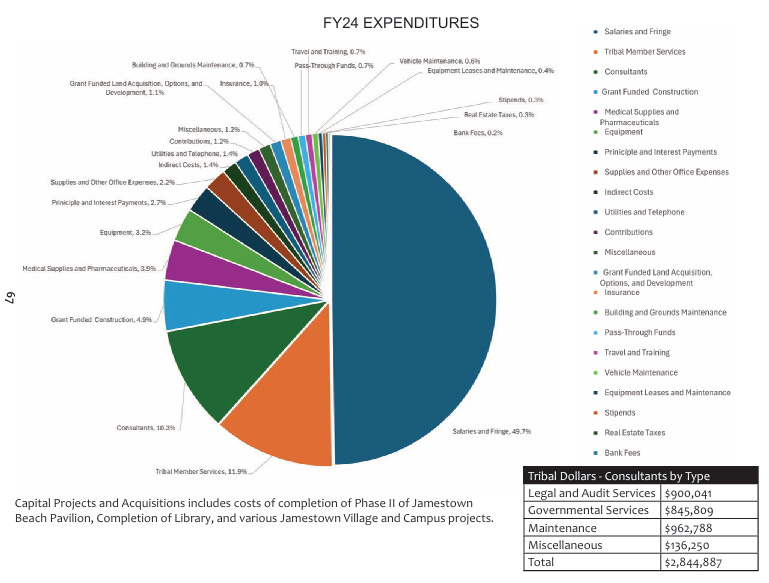
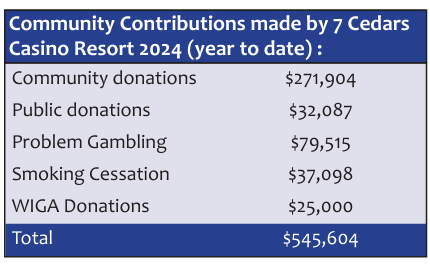
Allowing sovereign lands within a sovereign land is without logic and more importantly without equality. I am fatigued from repeating myself but those historically abused and their abusers no longer live. If those claiming indigenous heritage are entitled to rights and privileges above all other occupants of the land via sovereignty, they should be treated the same as all sovereign lands. Why is it that there is no acknowledgement in this country for Caucasian heritage ? Why is it that heritage, real or claimed, matters ? I happen to be an admirer of was is wrongly termed Native American art. I am a native born American, but have no claim to indigenous ancestry.
The local coastal tribes in particular with their inspiring double images of a real image coupled with it's spirit image. Federal grants paid for by all those without any claim to indigenous ancestry are gifted to those with that claim indigenous status and then the non-indigenous must pay more taxes to provide the infrastructure used by the indigenous who do not equally pay their share. The altruistic image of a "Native American" using spears and bark woven fishing nets for sustenance is shattered when they use motor powered boats and equipment and nylon monofilament gill nets . This incongruence must be addressed. Native or non-native ? Why is one's ancestry rewarded, while another's is not in a society built on equality ? Sovereign is sovereign. In or out. Not both and.
What most people don't have, but can't live without is the cost of health insurance. Most have high deductibles with many areas of health care either not covered, or partially covered. Most live in fear that they are one injury or illness away from losing their assets.
Native Americans don't have health care concerns looming over the heads. WE cover that cost too.